The Beach Boulevard Experience
|
|
Anyone moving into the area after August 17, 1969 would never really be able to understand what the downtown Bay St. Louis Beach Boulevard experience had really been all about. Other hurricanes had done substantial damage to the Bay St. Louis beachfront, but 1969’s Hurricane Camille wiped the water side clean.
The only building that was left standing on the water side was the DiBenidetto building which lost the back third of the structure to the tidal surge. The building had been purchased by attorney Joe Benvenutti prior to the hurricane. After the storm, the rear of the building was sealed off and it was rented by a roofing company to store roofing supplies. Months later, the building was completely destroyed in a spectacular late-night fire. |
Growing Up Downtown
|
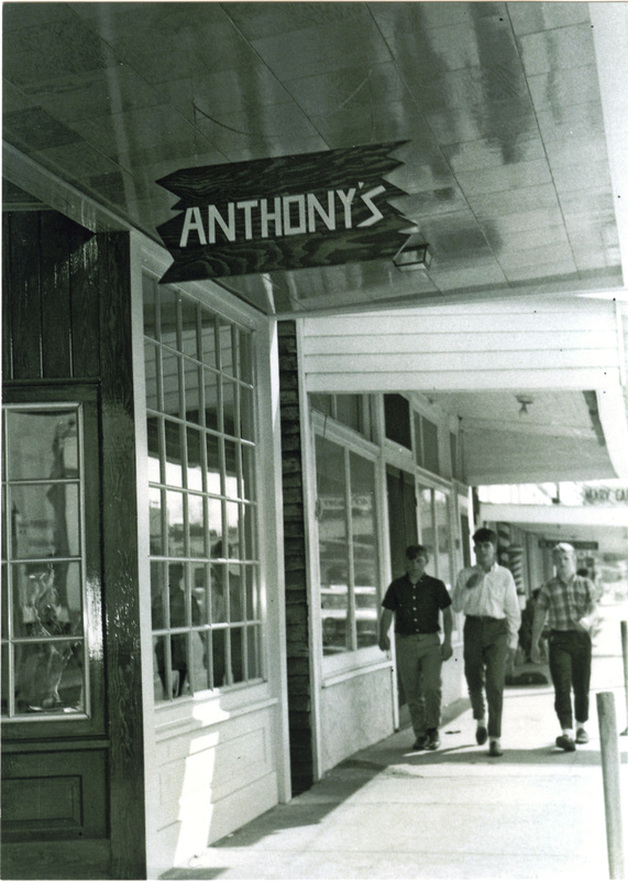 Sidewalk and front entrance to Anthony’s Mens Wear on Beach Blvd. (Pat Murphy Archives)
Sidewalk and front entrance to Anthony’s Mens Wear on Beach Blvd. (Pat Murphy Archives)
By the year of my birth in 1949, most all of the buildings South of the railroad tracks had been destroyed by hurricanes, fire, or torn down. From the early 1900s, there had been many, many businesses on the water side of South Beach Boulevard extending past Washington Street. I have always been fascinated by the existence of these buildings, even though they were gone by the time of my birth. The only building left south of the railroad tracks in my youth was the Osoinach Bay Mercantile building which was across the street from Merchants Bank.
When I was a child, the buildings on the water side started up on the north with Trapani’s Knock-Knock Bar. Before the 1947 hurricane there had been at least several more buildings north of Trapani’s (Staehle’s Shoe Store, Hamburger King, and the original Dixon Drug Store). When I was a very young boy, I remember my dad taking me into Trapani’s, sitting me up on the bar, and buying me a Barq’s root beer and a bag of peanuts. Daddy would then have a couple of beers while shooting the bull with Frank. Little did I know that years later my professional musical career would begin on New Year Eve 1965 with my first band, the Saxons, playing for a private party in the rear bingo hall of Frank Trapani’s bar!
Moving south from Trapani’s was Dixon’s Drug Store, which I seem to remember having a really good soda fountain, and after Dixon’s there were a couple of smaller buildings that housed restaurants and other small shops. Through the years these shops included a record shop and photography studio (where in 1967 my band, The Subway Prophets had our first promo photos taken). Before the 1947 hurricane destroyed them, a sandwich shop and Martin’s Bar also stood in this space.
Taconi’s Pier was next in line going south. This space was one of the only breaks in the buildings where you could see the water. You could rent old wooden skiffs, buy bait and, from time to time, buy fresh seafood off the pier. The first and last time that I ever chewed tobacco was out on Taconi’s pier. I was probably eleven years old and my friend Donald Gavarnie and I went out there to “take a chew." Being a novice at the game, I swallowed some of the tobacco juice, turned green, got sick, threw up and my tobacco-chewing days were officially over. Never again!
After Taconi’s pier, came Bay Furniture, which sold used furniture. At one time, this building had also housed the Red Star Fish Market and Bay Seafood. The building was eventually renovated by Anthony Loicano in the mid-1960s when he opened the original Anthony’s Men’s Wear. Next to Bay Furniture was Manieri’s Restaurant & Bar run by the Manieri sisters, Dutch and Vee. Manieri’s was a downtown Bay St. Louis institution and had operated in several locations since the turn of the century.
After passing Manieri’s, there was Piazza Brothers Barber Shop. Sam Piazza and Oren Cuevas were the barbers. This barber shop was one of the local hangouts for males in downtown Bay St. Louis. Back then, men got their haircut once a week so there was always a bunch of guys there! There were framed photos of kids getting their first haircuts in the front display windows. Piazza Brothers also had a ladies beauty shop in the rear.
Next to the Mary Carter Paint store, there was a furniture store (among other things over the years) and then there was a duplex that housed two businesses. On one side was Eddie Marquez’s Bar and on the other side was the second location of Bresslers’ Café after Mr. Tom moved from Main Street. Later, H&R Block occupied this side of the building. After this duplex, there was another vacant lot. Prior to the destruction of the 1947 hurricane, this vacant area had housed Kergoisen Brothers furniture store and real estate business.
On the other side of this vacant lot stood my favorite of all the old downtown businesses, DeMontluzin’s Drug Store. This downtown institution was an absolute classic; a time warp right out of the 1890s because the business had been established before the turn of the century. From the exterior painting to the furnishings, everything was original from that time period. When you walked in the front door, it was like you stepped back in time seventy five years. This store still had the curved glass display cases, glass apothecary jars, and the big old-time free scale that you stood on and weighed yourself - and the best butter pecan and other scoop ice cream cones that I’ve ever eaten. They not only sold prescriptions, but fancy perfumes, ladies' body powders, stationary, magazines and confections as well.
Next to DeMontluzin’s Drug Store was Mr. George DiBenedetto’s Radio and Television Store. At one time this had been Mr. George’s father’s grocery store. I was buddies with Leo DeBenedetto, so we’d hang out there some also. The first PA speaker cabinets that I ever used in a band were speaker cabinets made by my dad and Ronnie Genin’s dad and the speakers we used were old speakers that Leo and I robbed out of junk stereos down in Mr. George’s junk room! The L&N railroad tracks intersected South Beach at this point.
All of these buildings on the water side were built on the hill that ran from the street down to the seawall. They were continually at risk for damage when hurricanes occurred. The entrance to each store opened on to the sidewalk but the building was built out on creosote pilings and underneath them was a vast empty overgrown no man’s land.
Sometimes this space was used as a place for the building’s owner to store junk or lumber. There was very little beach and what was there was overgrown with vegetation. This was another secret play area that provided a cornucopia of delights for a young boy’s imagination. There were thousands of pigeons that roosted under these buildings and an abundance of hiding places to retreat to when it was playtime. Many hours were spent chasing rats, catching snakes and pigeons and playing with my cronies down there. We all would have been “half killed” or “beaten within an inch of our lives” if our parents had known we were down there hanging out.
Across State Street was The A&G Theatre. Originally starting as an open air theatre across the street on the water side, the A & G stood for Ames and Gaspard. In its day this was a very nice first class theatre. By the nineteen sixties, the A & G was getting kind of run down.
Next to the A&G Theatre was Ms. Daisy Bordages’ boarding house. This was before bed and breakfasts became fashionable. Back then if you wanted to stay downtown it was either at Ms. Daisy’s or at the upscale Reed (formerly The Weston) Hotel located at the corner of Ulman Avenue (highway 90) and Beach Boulevard at the foot of the old car bridge. My Dad’s older sister Lucille rented a room from Ms. Daisy while her husband, my uncle Mitch Witter, was away in the military during the Second World War.
South of Ms. Daisy’s was Sunshine’s Ice Cream Parlor. This was the local malt shop and the hangout for teenagers after school as well as another downtown lunch spot. Sunshine’s was run by Mr. and Mrs. Gordon Gleim. Mr. Buster Heitzmann told me that this building had previously been a pool hall with a bookie operation in the back room during the nineteen thirties. Before that it had been a drug store.
Ramsey’s Department Store was located next door to Sunshine’s. This was one of two really nice full service department stores in downtown Bay St. Louis. Doc Ramsey was a local dentist and a good friend of my grandfather Stevenson. Doc had his dentist office upstairs above the department store. In the early nineteen forties The Bay Café had been located downstairs on the Main Street side of the Ramsey Building.
Next to Ramsey’s there was a concrete block building on the corner of Main Street and North Beach Boulevard. Mr. Henry Osoinach, whose family had been the proprietors of The Osoinach Opera House and The Bay Mercantile Company since the turn of the century had relocated Bay Mercantile and built this building in the early 1950s. Before I was born Mr. Charlie Breath - as well as the Gilmores - had operated a garage and Standard Oil gas station at this corner location. Back at the turn of the century, this lot had been the site of Taconi’s Tavern.
Next to the Hancock Bank Building heading south was a vacant lot (now home to Tercentenary Park) then Delph’s Department store, the other really nice downtown department store. This business had previously been Mauffray’s Dry Goods that encompassed both sides of the building. Mr. Oc Delph married Ms. Oleah Mauffray and they bought the dry goods operation from Mrs. Delph’s father, Joseph Mauffray around 1939 and totally remodeled the store by the early 1950s.
Mauffray’s Hardware store was in the other half of the building that housed Delph’s. Alden Mauffray, Mrs. Delph’s brother was the proprietor of Mauffray’s Hardware. You could walk into this store and ask for any given item and Mr. Mauffray would tell you to take nine steps turn left and go to the end of the aisle and look at your left elbow and the item would be right there where he said it would be. Everybody called Mr. Mauffray “Uncle Aldee”. Mr. Alden Mauffray was an avid fisherman and was known nationally for his fishing abilities.
Next to Mauffray’s Hardware where the city parking lot is today was an AutoLec Auto Parts Store with Gulf Chevrolet’s body shop behind it in the rear yard. The next building was the location of Bay St. Louis’ Chevrolet dealership, Gulf Chevrolet. Later, when Gulf Chevrolet relocated out on Highway 90, this building would house Casanova’s Auto Parts and eventually The First Precinct and The Firedog Lounges.
On the opposite side of Court Street next to the railroad tracks was Mr. Ed Arceneaux’s Shell Station and Garage. Arceneaux’s had been in business since the nineteen thirties and it was a mainstay in downtown Bay St. Louis.
Next month - The Beach Boulevard Experience, Part 2 - South of the Tracks
Categories
All
15 Minutes
Across The Bridge
Aloha Diamondhead
Amtrak
Antiques
Architecture
Art
Arts Alive
Arts Locale
At Home In The Bay
Bay Bride
Bay Business
Bay Reads
Bay St. Louis
Beach To Bayou
Beach-to-bayou
Beautiful Things
Benefit
Big Buzz
Boats
Body+Mind+Spirit
Books
BSL Council Updates
BSL P&Z
Business
Business Buzz
Casting My Net
Civics
Coast Cuisine
Coast Lines Column
Day Tripping
Design
Diamondhead
DIY
Editors Notes
Education
Environment
Events
Fashion
Food
Friends Of The Animal Shelter
Good Neighbor
Grape Minds
Growing Up Downtown
Harbor Highlights
Health
History
Honor Roll
House And Garden
Legends And Legacies
Local Focal
Lodging
Mardi Gras
Mind+Body+Spirit
Mother Of Pearl
Murphy's Musical Notes
Music
Nature
Nature Notes
New Orleans
News
Noteworthy Women
Old Town Merchants
On The Shoofly
Parenting
Partner Spotlight
Pass Christian
Public Safety
Puppy-dog-tales
Rheta-grimsley-johnson
Science
Second Saturday
Shared History
Shared-history
Shelter-stars
Shoofly
Shore Thing Fishing Report
Sponsor Spotlight
Station-house-bsl
Talk Of The Town
The Eyes Have It
Tourism
Town Green
Town-green
Travel
Tying-the-knot
Video
Vintage-vignette
Vintage-vignette
Waveland
Weddings
Wellness
Window-shopping
Wines-and-dining
Archives
July 2024
June 2024
May 2024
April 2024
March 2024
June 2023
March 2023
February 2023
January 2023
December 2022
November 2022
October 2022
September 2022
August 2022
July 2022
June 2022
May 2022
April 2022
March 2022
February 2022
January 2022
December 2021
November 2021
October 2021
September 2021
August 2021
July 2021
June 2021
May 2021
April 2021
March 2021
February 2021
January 2021
December 2020
November 2020
October 2020
September 2020
August 2020
July 2020
June 2020
May 2020
April 2020
March 2020
February 2020
January 2020
December 2019
November 2019
October 2019
September 2019
August 2019
July 2019
June 2019
May 2019
April 2019
March 2019
February 2019
January 2019
December 2018
November 2018
October 2018
September 2018
August 2018
July 2018
June 2018
May 2018
April 2018
March 2018
February 2018
January 2018
December 2017
November 2017
October 2017
September 2017
August 2017
July 2017
June 2017
May 2017
April 2017
March 2017
February 2017
January 2017
December 2016
November 2016
October 2016
September 2016
August 2016
July 2016
June 2016
May 2016
April 2016
March 2016
February 2016
January 2016
December 2015
November 2015
October 2015
September 2015
August 2015
July 2015
June 2015
May 2015
April 2015
March 2015
February 2015
January 2015
December 2014
November 2014
August 2014
January 2014
November 2013
August 2013
June 2013
March 2013
February 2013
December 2012
October 2012
September 2012
May 2012
March 2012
February 2012
December 2011
November 2011
October 2011
September 2011
August 2011
July 2011
June 2011

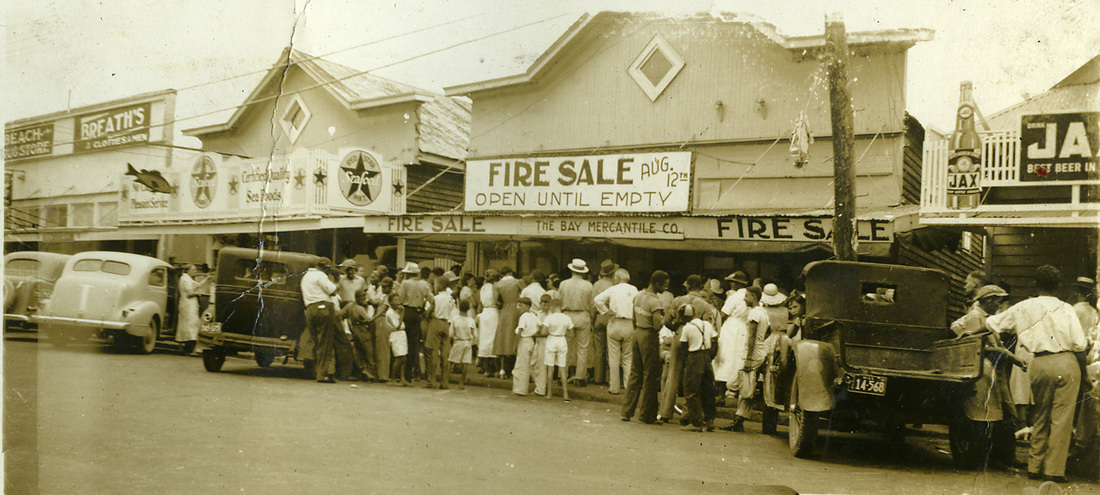
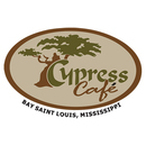
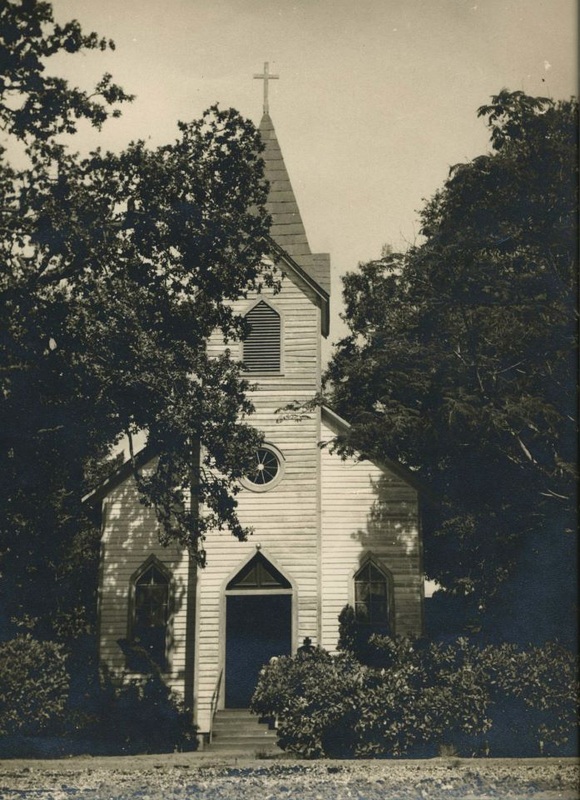
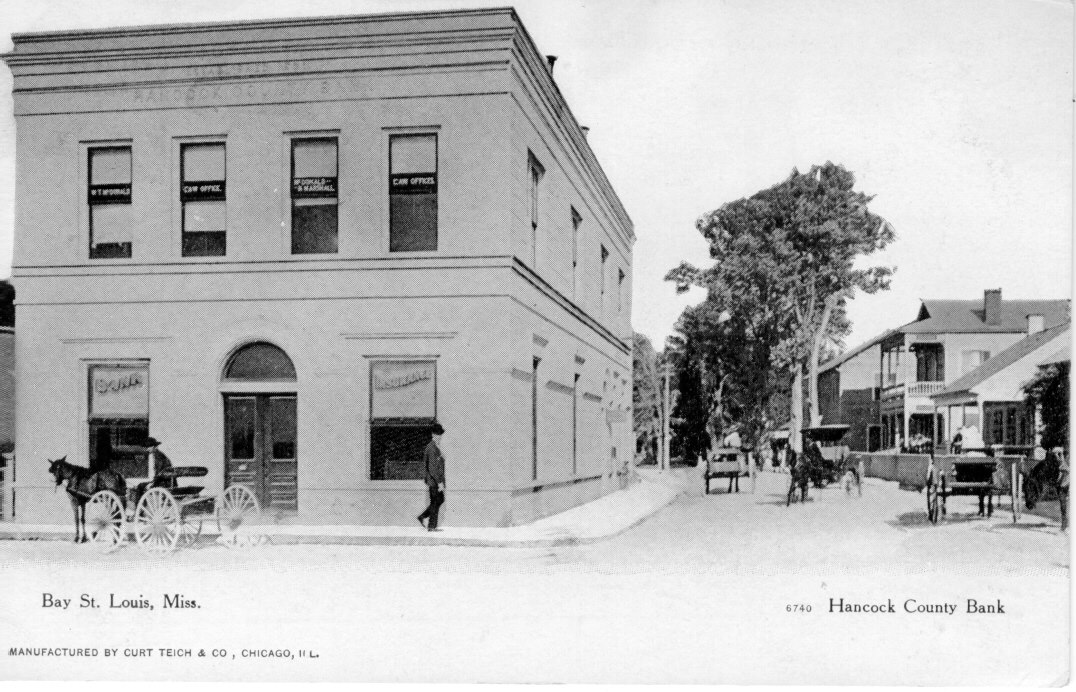
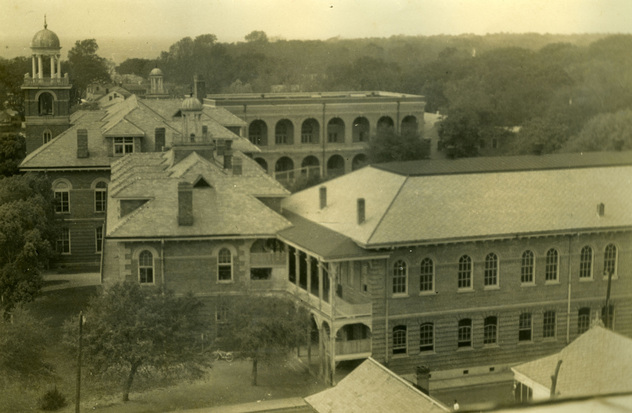

























 RSS Feed
RSS Feed























